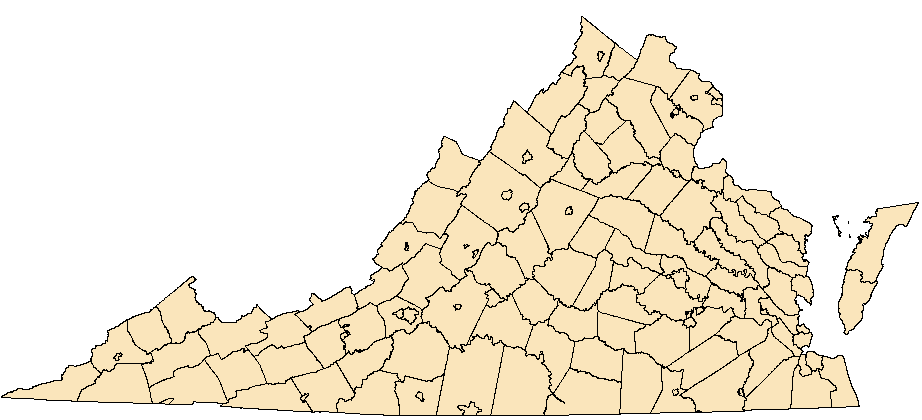Stylurus amnicola (Walsh, 1862)
Riverine Clubtail
NatureServe Global Rank: G4
Virginia State Rank: S1
VA DGIF Tier: IV
Federal Legal Status: None
Virginia Legal Status: None
Description: The Riverine Clubtail is about 2.1 inches long. The face is pale with darker markings and turquoise eyes. The thorax is dark with a diagnostic complex pattern on the front of a three-pointed star and pair of wide stripes, and faint lines in between the segments. The abdomen is black with yellow, spear-shaped markings on the dorsal surface and prominent yellow spotting on the sides of the posterior end. The legs are black with a pale base of the hind femora and a pale inside of the female's front femora.
Similar species: The Riverine Clubtail is similar to the Black-shouldered Spinyleg (Dromogomphus spinosus), but is easily separated with the smaller yellow spots on the posterior end of the abdomen. The pattern on the thorax easily distinguishes the Riverine Clubtail from other species.
North American Range: The Riverine Clubtail ranges from Canada through eastern New York, Vermont and western Maine/New Hampshire, south to Virginia and North Carolina, then northwest to the Mid-western and Great Lakes states.
VA Observations by Locality: Nelson | Grayson | Powhatan




Flight season and broods: The Riverine Clubtail can be found from May through September.
Aquatic Habitat: The Riverine Clubtail lives in medium to large rivers with varying flow and varying substrata, in and out of forested areas.
Behavior and Ecology: This species is rarely seen as individuals tend to spend most of their time on treetops but also sometimes perch on vegetation near the water. Males can occasionally be seen cruising the middles of rivers or even the edges, but usually for brief periods of time. They have been seen foraging in undergrowth in sun and shade.
Population trend and potential threats: The Riverine Clubtail may be negatively impacted by poor water quality, or habitat degradation.
Management practices: Populations should be monitored and habitats preserved.
References: Dunkle, Sydney W. 2000. Dragonflies Through Binoculars: A Field Guide to Dragonflies of North America. Oxford University Press, New York, NY. 266 pp.
LeGrand, H., E. Corey and T. Howard. The Dragonflies and Damselflies of North Carolina. http://www.dpr.ncparks.gov/odes/a/accounts.php. Accessed: 4/8/2013
Paulson, Dennis. 2011. Dragonflies and Damselflies of the East. Princeton University Press, Princeton, NJ. 530 pp.
Virginia Department of Conservation and Recreation, Natural Heritage Program, 600 E. Main St., 24th Floor, Richmond, VA 23219
This atlas was compiled
by the VA Natural Heritage Program with funds provided by the VA Dept. of Game and Inland Fisheries through a state wildlife grant
from U.S. Fish and Wildlife Service
Questions/Comments? Check the contacts page |
Internet Privacy Policy Statement
Last Modified: Friday, 26 February 2021, 03:21:56 PM